HarmonicaUK started life as a Hohner marketing activity in 1935 and remained so until it was handed over to the members in 1981. It was first called the Hohner National Song Band League (SBL), then the National Harmonica League (NHL) in 1982 and finally HarmonicaUK in 2021.
Life after Hohner
We left Part 5 in our history at the point where Hohner had enlisted a prominent NHL member, John Tyler, to reinvigorate their organisation, the NHL. Things came to a head in 1980 when John Tyler felt he had done all he could and the Hohner management decided that they could not continue to promote the NHL in the way they had done for the previous 50 years. They needed a way forward.
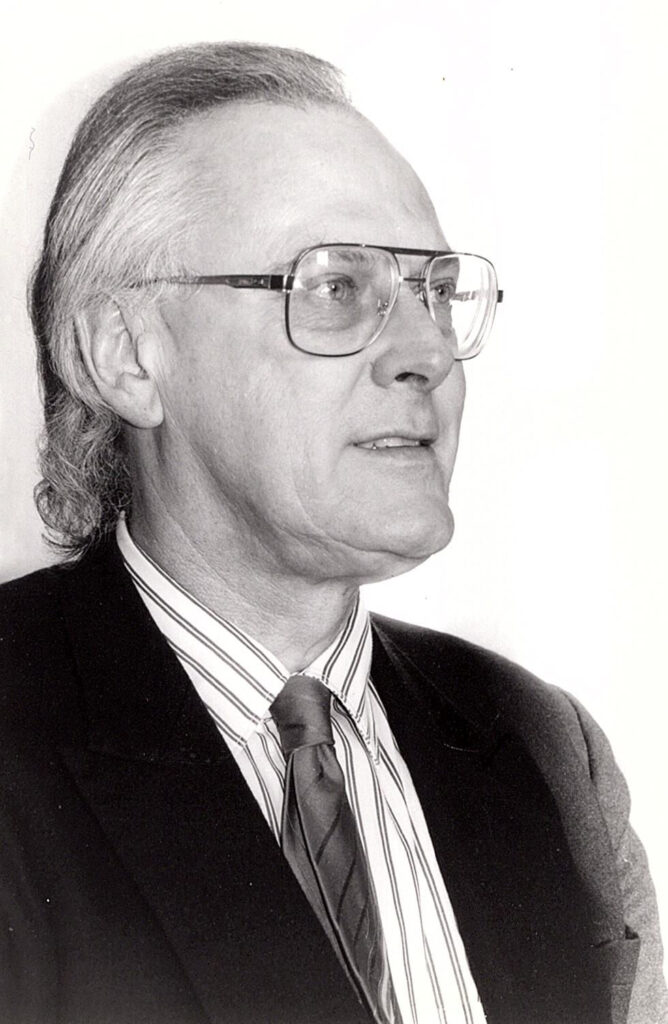
John Walton was born in South Africa in 1940. He was a successful chromatic harmonica player and entertainer who had met many of the top performers.
John had worked in Variety and on cruise ships before moving to the UK in 1978. He settled in Bournemouth with his family and immediately got involved with the NHL.
John Walton was born in South Africa in 1940. He was a successful chromatic harmonica player and entertainer who had met many of the top performers. John had worked in Variety and on cruise ships before moving to the UK in 1978. He settled in Bournemouth with his family and immediately got involved with the NHL.
In 1981 John had meetings with John Tyler who had decided to step down and dedicate more time to his job as a headmaster. John Walton agreed to take over as Director in 1982. He had always wanted to start a harmonica club – now he had one and he set out to make it successful. A new membership card and a lapel badge was produced.
At the time of the handover, the membership of the NHL was over 2000 but the majority of them had paid £1 to receive the magazine. Once Hohner decided to withdraw its financial support for the NHL, John had to raise the membership fee to £6 to cover the forecast running costs, and the membership fell to a couple of hundred.
Initially Hohner continued to edit, print and distribute Harmonica News and John Walton provided the content. John became frustrated when Hohner edited his writing and controlled some non-Hohner content.
By the time of John’s first NHL event, The Convention, at the Guildhall in Southampton in Nov 1982 he had decided on some major changes. At the AGM it was agreed that the name of the magazine would be changed to Harmonica World because Harmonica News was registered to Hohner. Operating costs had to be brought under control so they reduced the magazine size from A4 to A5, and the Walton family printed and posted out the magazine themselves.
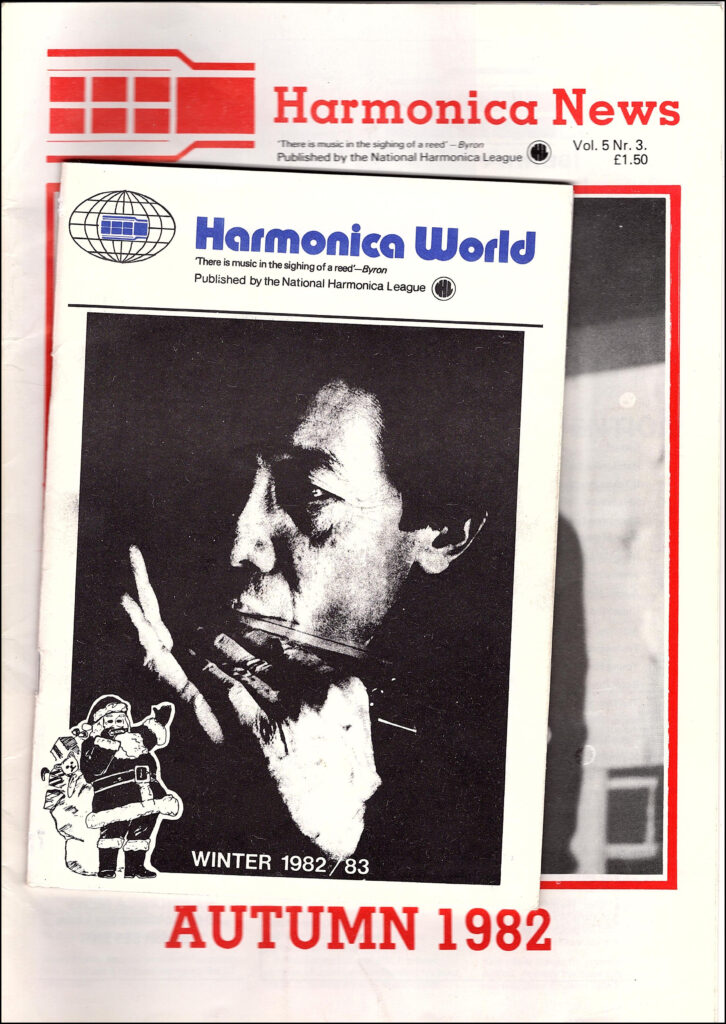
The NHL was fully independent of Hohner but controlled by John Walton. John became President with his wife Jeanette as Secretary. Norm Dobson (US) was appointed as Chairman and Area Secretaries were set up to encourage local activities.
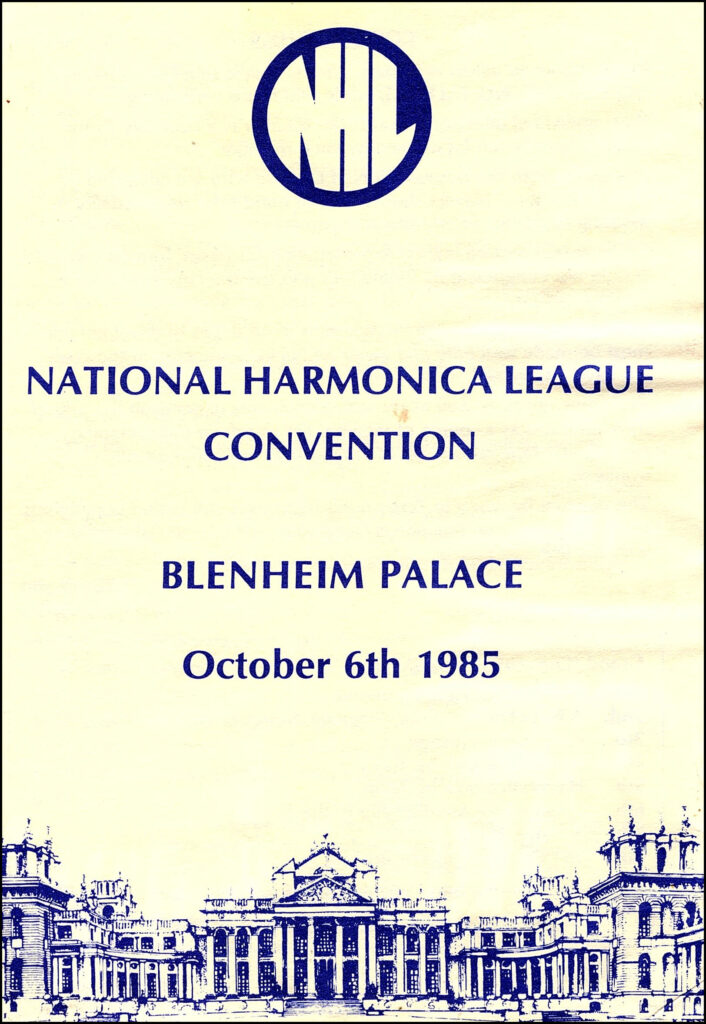
The Convention became the NHL’s main annual event with the 1983 event being held in the Queen Elizabeth Hall, Stratford upon Avon. John held a competition for the Young Harmonica Player of the Year, which was won in 1982 and 1983 by Rowena Gelling (now Millar). She was awarded the Fred Southern Trophy. Many familiar names were members at this time – Frank Eatwell, Colin Mort, Jim Hughes, Doug Tate, Ken Howell, Jimmy English, Alf Clay, Windsor Carlisle and a future Chairman, Pete Hewitt.
The Convention became the NHL’s main annual event with the 1983 event being held in the Queen Elizabeth Hall, Stratford upon Avon. John held a competition for the Young Harmonica Player of the Year, which was won in 1982 and 1983 by Rowena Gelling (now Millar). She was awarded the Fred Southern Trophy. Many familiar names were members at this time – Frank Eatwell, Colin Mort, Jim Hughes, Doug Tate, Ken Howell, Jimmy English, Alf Clay, Windsor Carlisle and the current Chairman, Pete Hewitt.
Subsequent Conventions were held in Westcliff-on-Sea (1984), Blenheim Palace (1985), Bournemouth (1986) and Western-Super-Mare (1987).
An additional event was added to the calendar in 1986 when Frank Eatwell held the Open Harmonica Championship in Banbury. Jim Hughes organised a similar British Harmonica Championship and Gala Concert in Shirley, Birmingham in 1987. Later that year, Jim produced the first genuine World Championships in Jersey (Channel Islands) which was the template on which the subsequent Hohner four yearly festivals were based.
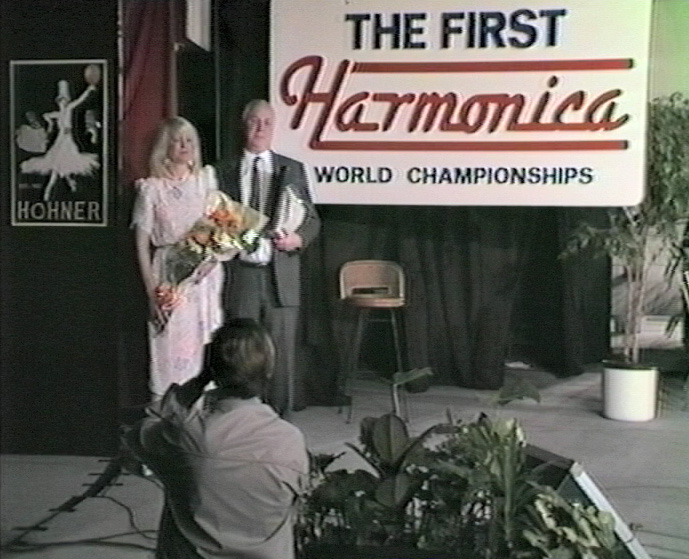
John Walton always wanted the NHL to be an international organisation and he travelled to many overseas harmonica events. In 1984 he visited SPAH with this family harmonica group, the Harmonaires, and in 1985 he took a party of NHL members, including Jim Hughes, to a week long HarmonicaFest run jointly with the renowned chromatic player, Cham’ber Huang, in Silver Bay in Upstate New York.
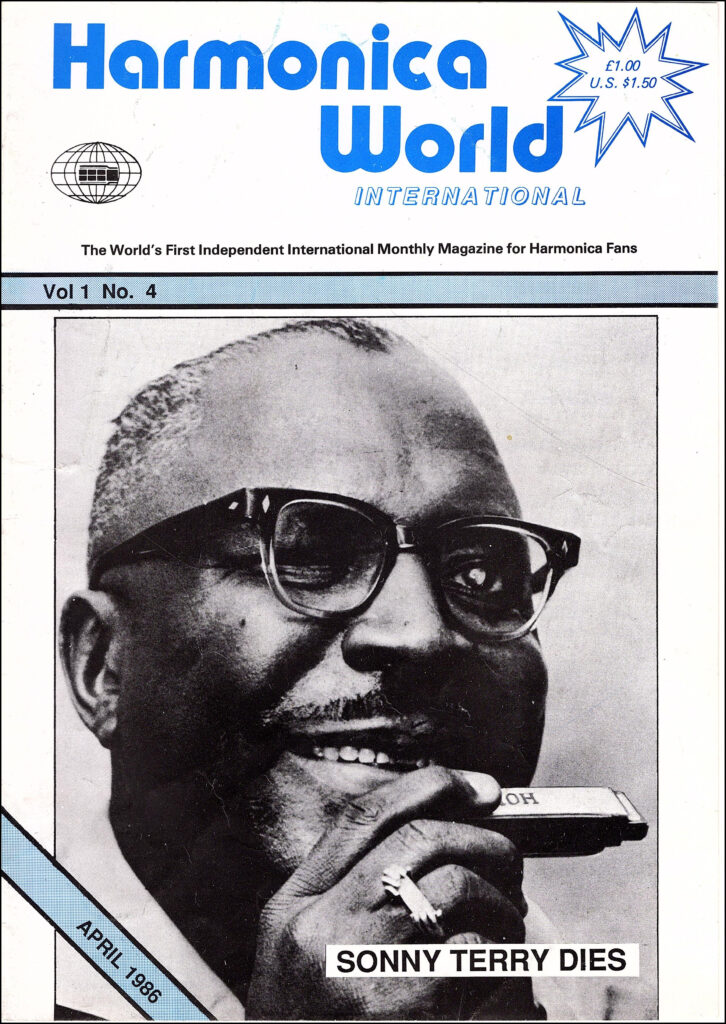
Towards the end of 1985 John Walton made a big decision. He changed the focus of Harmonica World and renamed it Harmonica World International. The simple, quarterly A5, personally printed magazine became a new glossy, monthly A4, international harmonica magazine printed by his family company, Able Music. John continued to feature NHL News but he opened it up to all harmonica clubs around the world. He had wanted to build a world wide harmonica magazine with up to date news, but he was about thirty years too soon. It would need the Internet and live, online digital magazines before this could be done profitably.
At the same time that John changed the magazine he became a founder member and Treasurer of the new International Harmonica Organisation (IHO) set up by Peter Janssen from Holland. The IHO decided to use Harmonica World International as their official organ. NHL members were encouraged to join both organisations.
John Walton stepped down as President at the AGM at the end of 1986, having agreed that Colin Mort would take over. John stayed on as Treasurer/Secretary. He had achieved a lot in his 5 years in charge, raising standards and building up the organisation, but a new approach was needed. The losses incurred by the new magazine had become too great and the 18th issue in June 1987 was the final one.
The next part of our history will cover the move to a true members’ organisation and the recovery of the NHL finances.
Back to History of HarmonicaUK home index page.
Forward to The History of HarmonicaUK – Part 7